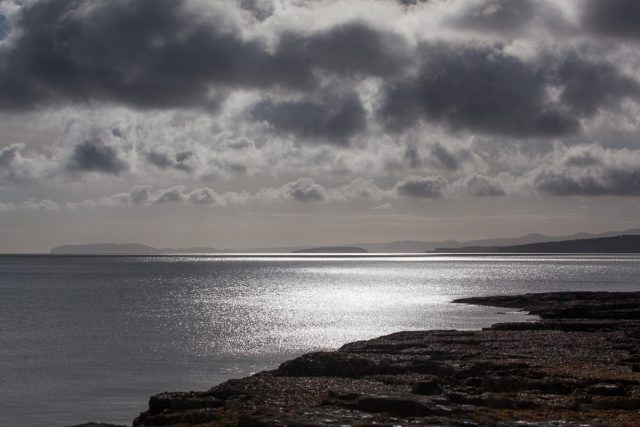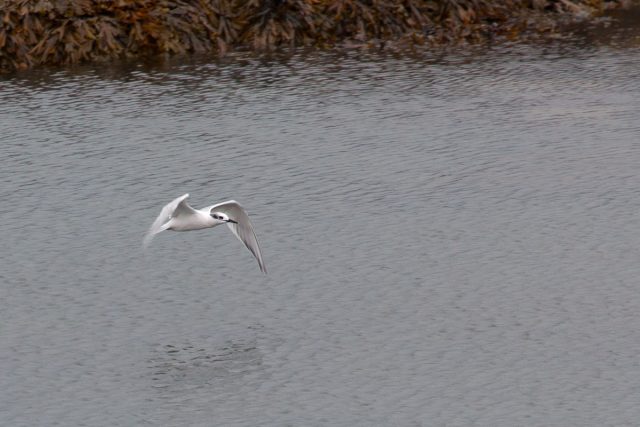· Anglesey ·
Down to the rocks with the obligatory brew first thing. The sea was sparkling once again. I sat on my favourite rock, closed my eyes, and faced towards the sun. Pay attention, I thought. Remember this. The warmth on your face. The breeze in your hair. The red glow through your closed eyelids. The sound of the sea lapping gently against the rocks. The herring gulls crying far off to the left in the bay. Take all this in. Absorb it. Next time you’re feeling down, or a bit stressed out, or pissed off, close your eyes and remember being right here, right now.

Floaters shot back and forth across the sky when I eventually returned to the visual world. I blinked them away, then took in the view. The tide was out, meaning there was shoreline rather than the usual waves through the gap in the rock-face to my left. Gulls and oystercatchers ambled this way and that on the wet sand. I saw one oystercatcher catch and devour a small fish in the shallows. I had no idea they did that. One enterprising young herring gull singled out a dibbing oystercatcher and tailed it. When the oystercatcher finally managed to tug an enormous lugworm out of the sand, the gull pounced. The oystercatcher, familiar with such tactics, immediately flew off with the lugworm still dangling from its orange beak. But the gull was not so easily evaded: it took off after the oystercatcher, harrying the poor creature until it dropped the lugworm on to the sand. A nanosecond later, the worm was wending its way down the thieving gull’s gullet.
I scanned the sea for a while through my binoculars, on the lookout for gannets and dolphins. None this morning. But that’s one of the joys of nature waiting: never knowing for sure what you’re going to see.
Suddenly a commotion. The gulls on the beach cried in frantic unison and flew low across the breaking waves, landing in the sea. They looked anxiously back at the shore, on high alert. Meanwhile, the oystercatchers had scuttled and flapped across the sand to take refuge in the seaweed-covered rocks at the edge of the beach. Through the gap in the rock-face, I couldn’t see what had spooked them—a dog-walker, I guessed. As I stood to take a better look, a female peregrine soared up into view, flying directly towards me, then disappeared somewhere beneath the rock-face at my feet. Look as I might (and, believe me, I looked), I couldn’t locate where she had landed—if, indeed, she had landed, rather than skirting the rock-face and heading off low, out of view.
It occurred to me afterwards that taking to the sea is likely to be a gull’s best tactic when under attack by a peregrine. It’s certainly far safer than being in the air, or on the beach. A dunking in the sea is likely to prove fatal to a peregrine. I wonder if taking to the sea when peregrines approach is a tactic young gulls learn from more experienced gulls, or if it’s something hard-wired into their genes. Perhaps it’s a bit of both.
✽
Down at the rocks late afternoon, I fell arse-over-tit while examining a rock pool. I very nearly ended up in the damn thing, expensive camera and all. Inquisitiveness can be a hazardous trait.
Sandwich terns were fishing in the calm water just off the rocks. I was able to get closer than usual, and captured a couple of nice photos.

Leave a Reply